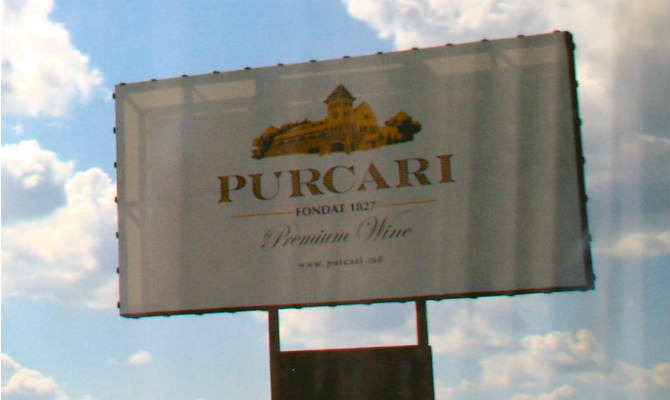The Wines Of Moldova: A Work In Progress
What is your favorite Moldovan wine? Right, I couldn't name a single one from that country either. In fact, it woudl be just as hard to stick a pin in the country on an unlabelled map. Both of which are a pity, as Moldova, though it's smaller than West Virginia and has a population less than that of Los Angeles, produces about 60 percent of the wine grape tonnage that California does. That makes it something of a viticultural center of activity. A quarter of the population is employed in wine production and the product normally accounts for approximately 28 percent of the country's exports (though it's less than a third of that at the moment due to a Russian embargo; see below).
This tiny landlocked country in the Caucasus, sandwiched between Romania and Ukraine, has made wine for 4,000 years, having been in on what historians consider the very beginnings of winemaking. The region's wine production went through growth and success during the Greek and Roman eras and near death under the anti-alcohol laws of the Ottoman Empire. When it became part of the Russian Empire after 1812, winemaking flourished again, and many French winemakers became involved here in the latter nineteenth century.
Two world wars in the twentieth century had a serious deleterious effect on the industry and communism put a focus on quantity rather than quality. In 1992, after the collapse of the Soviet Union a year earlier, Moldova joined the United Nations; the same year, it privatized its wine industry, and new leadership and modern technology have come to bear. Most production is for export, as the domestic market is small; Moldova is Europe's poorest country.
Moldovan wine producers resisted a full commitment to quality after privatization because of easy ongoing sales to Russia; Moldovan wine used to account for 10 percent of the Russian market by volume. In September of 2013, however,, a vindictive Vladimir Putin punished Moldova for its trade agreements with the EU by banning wine imports from the country. Now, Moldovans are refocusing away from Russia, a process that requires quality improvements and, at least temporarily, a focus on the international varieties (cabernet sauvignon, merlot, chardonnay, etc.) that are widely planted in the country.
Some 73 percent of the grapes grown in Moldova are international varieties; 17 percent are Caucasian cultivars, and ten percent are strictly local. White wine accouonts for 70 percent of the production, mainly from rkatsiteli, sauvignon blanc, chardonnay, and aligoté; the main red varieties are cabernet sauvignon, merlot, pinot noir, saperavi and rara neagră.
There are four growing regions which run north to south. The north is most important for white wine and the south for red. The terroir is rolling low hills in a moderate continental climate that does not get scorchingly hot in summer. The 46º-47º latitude is close to that of Burgundy.
My first experience with Moldovan wine came recently when I received two samples. The first was NV Cricova Crisecco Brut ($10.99) which, as you may have guessed from the similarity of the wine name to Prosecco, is a white sparkling wine made using the Charmat (tank) method. However, despite being labelled as Brut, this wine was as sweet as Asti Spumante. Not a flaw, but sample a bottle before you plan to buy a case for a special occasion. The grape blend is the native feteasca albă and international standby muscat. The wine had a strawberry flavor and was a medium-acid, simple wine. It competes head-to-head with Prosecco and is frankly too expensive, given the quality the Italians are putting out for the same price. Maybe the best way to think of this wine is as a stylistic work-in-progress. Drink it as a sweet substitute for Prosecco (or cava).
The other wine was a 2012 Purcari Rara Neagră ($10.99), a full-bodied red which I served with a lamb casserole. The indigenous rara neagră grape certainly has a unique character. The wine was as sweet as an amarone. It had a nose that was plummy and very ripe, and a finish like a ruby Port. While almost entirely fruit-driven, there were some forest-floor notes in the nose. The acid level was medium plus to high (apparently, a natural facet of the grape). Ultimately, the wine conveyed itself as a set of individually ambitious parts that did not resolve. Kind of a base wine with Libeskind's V&A Spiral on the front, a Roots supercharger on the back, and Lance Armstrong's doping regimen administered regularly. The result may win plaudits from the avant-garde but it is not quite ready for enjoyable drinking.
To drink Moldovan wine right now is like being a voyeur looking at a work in progress. The Moldovans will likely get it right eventually, but they have a way to go.
